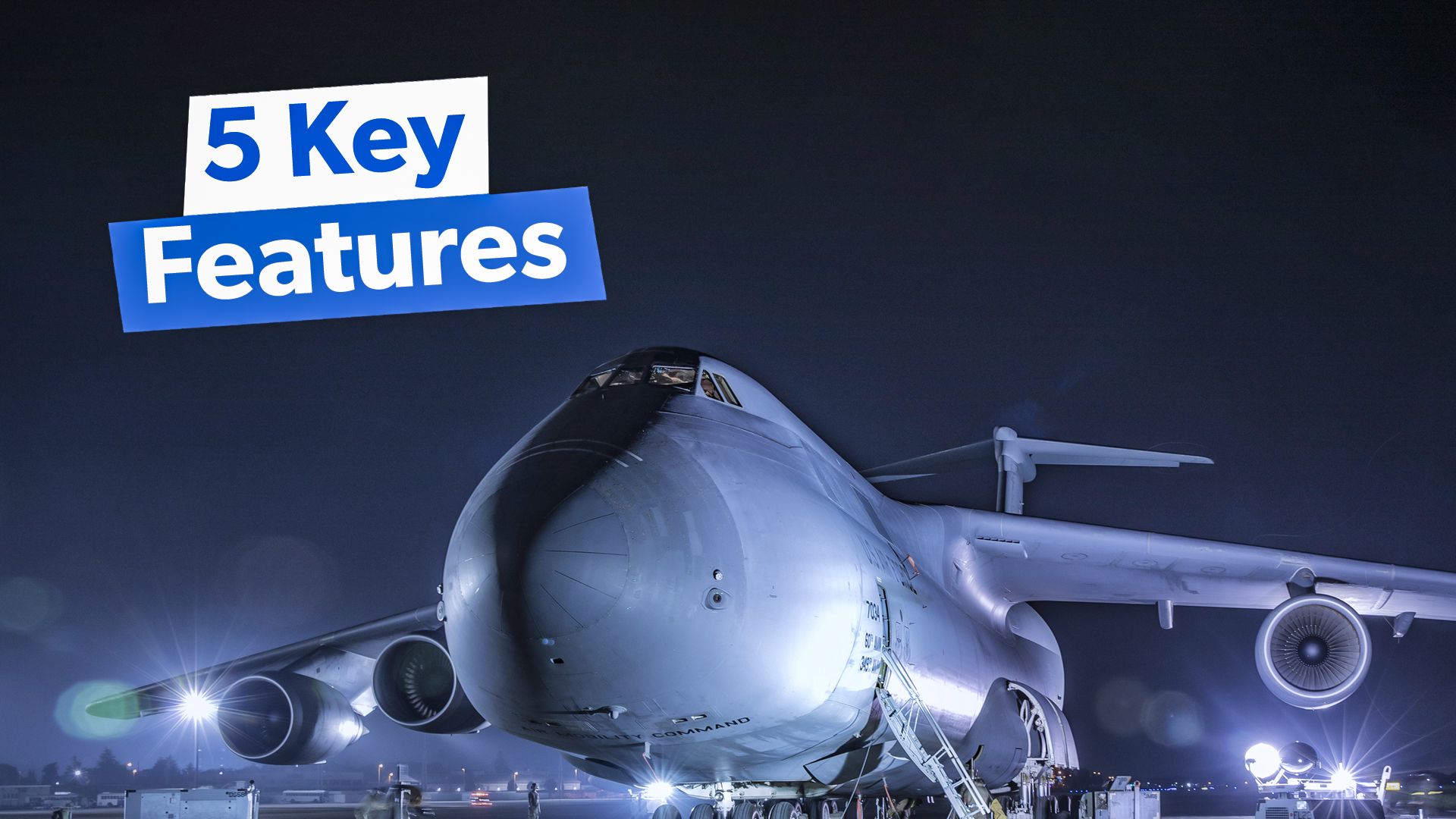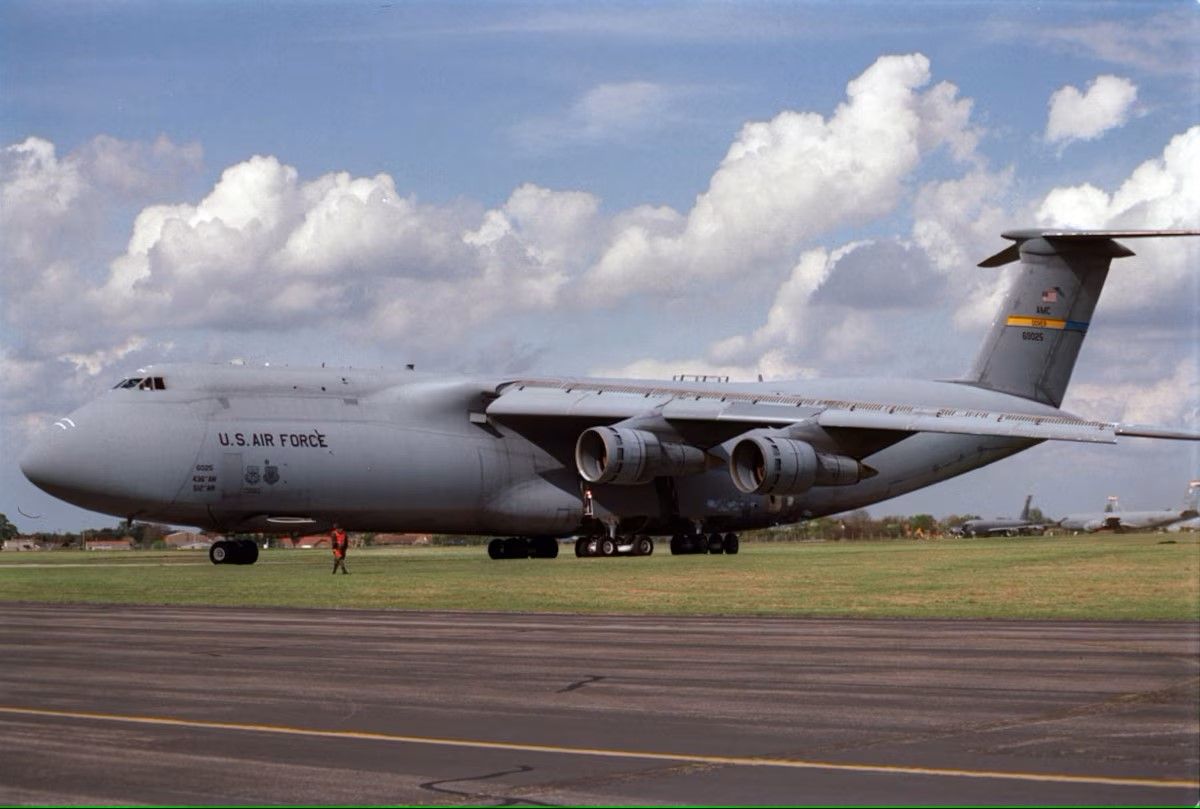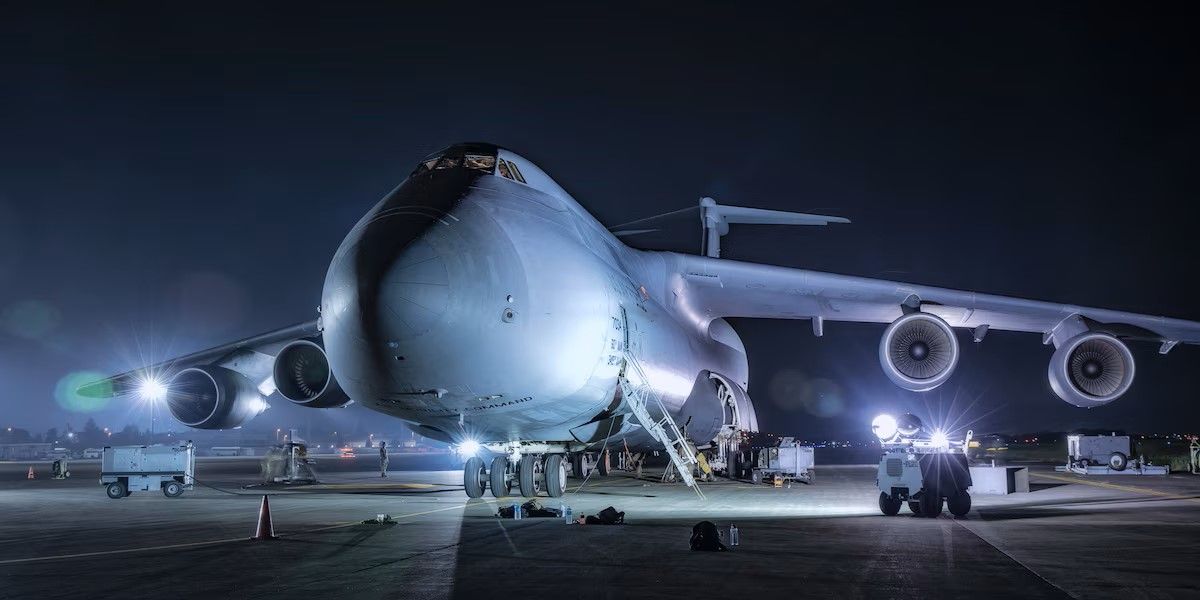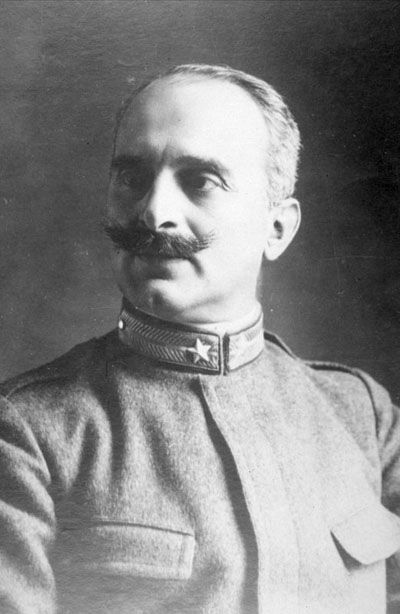Summary
- Sheer size: The C-5M Super Galaxy is the largest aircraft in the Air Force inventory with impressive dimensions.
- Sheer volume: The internal capacity of the C-5M allows for carrying 36 standard pallets and 265,000 pounds of cargo.
- Improved reliability: The C-5M addresses previous issues with a state-of-the-art maintenance diagnostic system and engine upgrades.
In radio jargon, the term “5×5” means “good signal strength” or “loud and clear.”
Well, we here at Simple Flying are about to put a different spin on “5×5, as in 5 key features of the Lockheed Martin C-5M Super Galaxy, the latest & greatest variant of the C-5 Galaxy transport plane that has been serving the Air Force since 1980. In the process, we hope to convey the information on the C-5M to you, dear readers, in a 5×5 manner (the “loud and clear” context, that is).
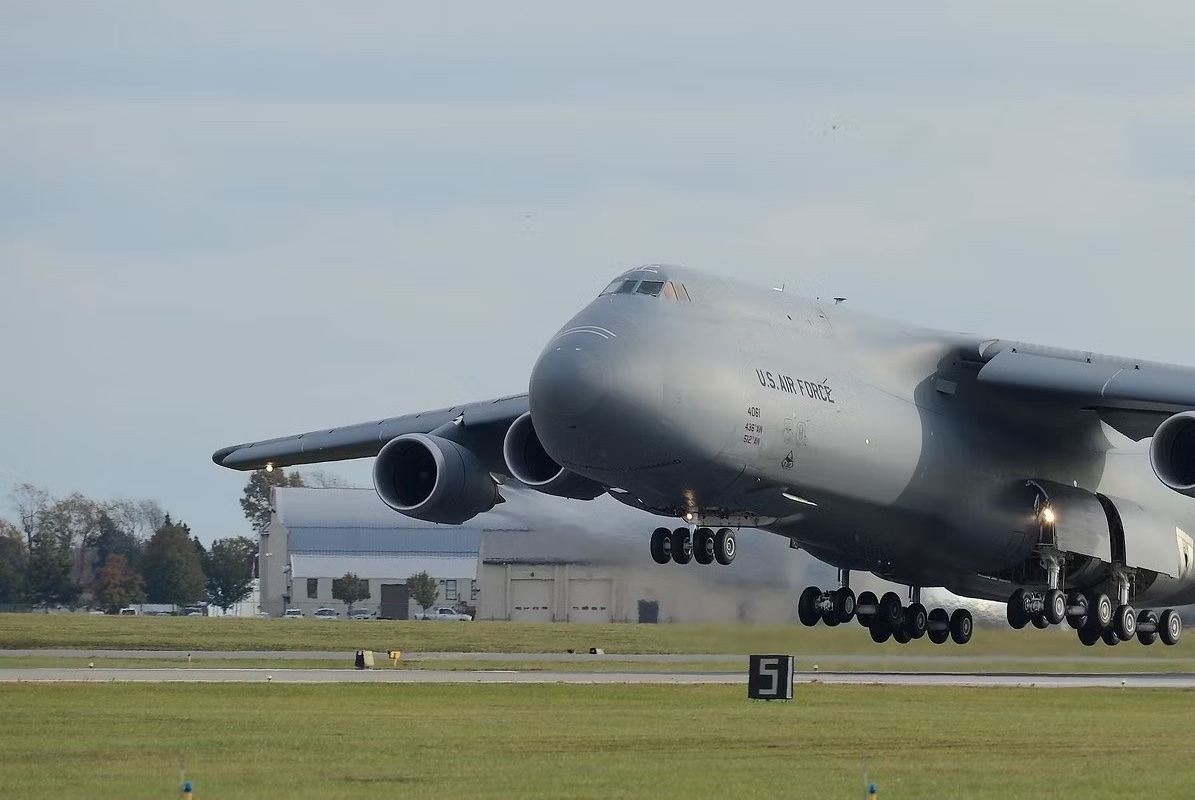
Related
Bigger & Better: 5 Fast Facts About The Lockheed C-5M Super Galaxy
The aircraft is an impressively versatile strategic airlifter.
1
Sheer size
“Look at the size of that thing”—Luke Skywalker
Okay, granted, the C-5M Galaxy is nowhere near as big as the original Death Star from “Star Wars Episode IV: A New Hope” or the second Death Star in “Star Wars Episode VI: Return of the Jedi.” Nonetheless, as noted by the official U.S. Air Force Fact Sheets, it is “the largest aircraft in the Air Force inventory.”
Just how large? See for yourself:
|
Length: |
247 ft 10 in (75.3 m) |
|
Wingspan: |
222 ft 9 in (67.89 m) |
|
Height: |
65 ft 1 in (19.84 m) |
|
Empty Weight: |
380,000 lb (172,365 kg) |
|
Max Takeoff Weight: |
840,000 lb (381,018 kg) |
|
Fuel Capacity: |
154,880 kg ( 341,446 lb) 51,150 US gal (42,590 imp gal; 193,600 L) |
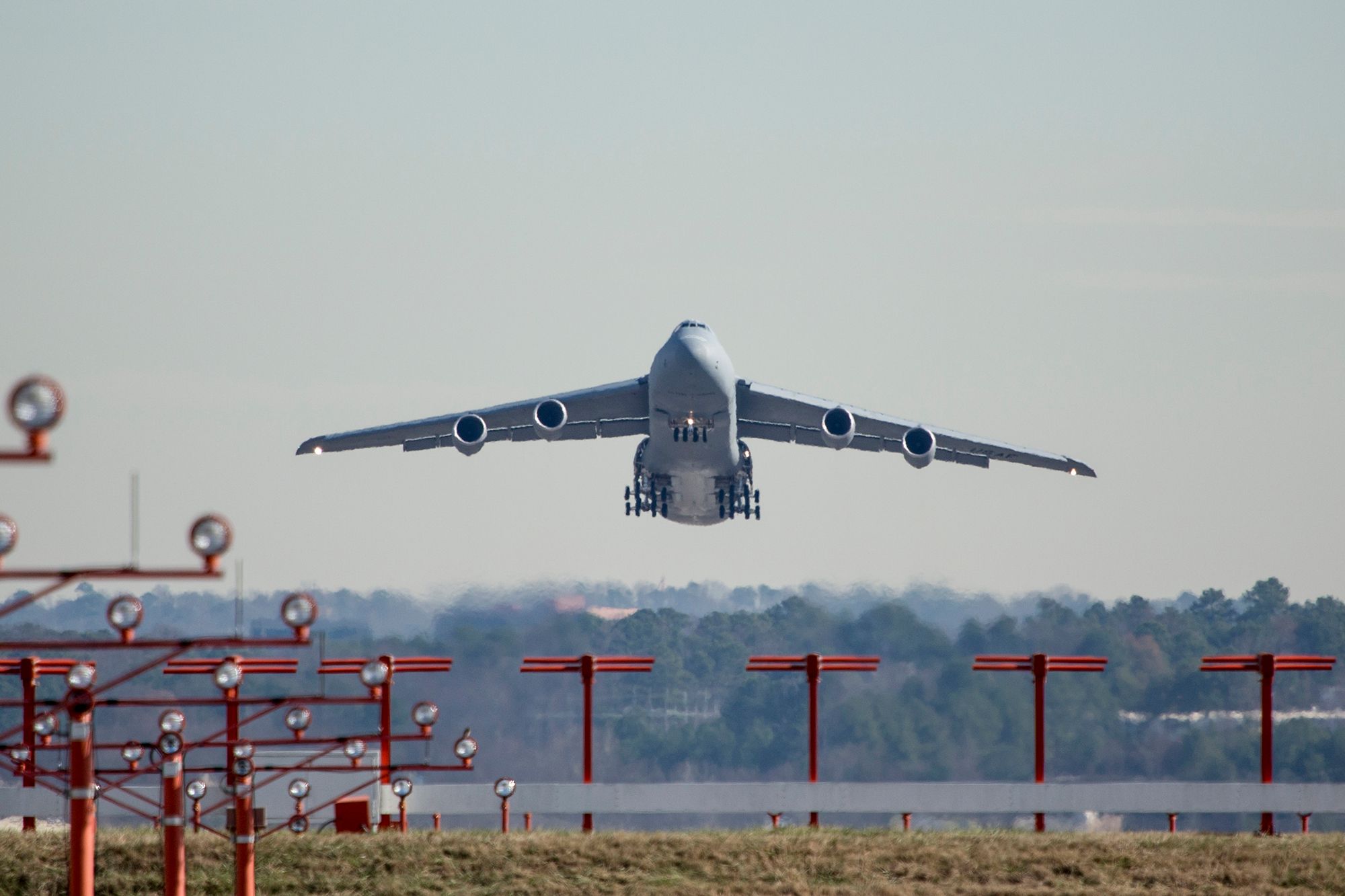
Related
An Absolute Unit: Everything You Need To Know About The Lockheed C-5 Galaxy
The airplane is higher than a six-story building, features an upper deck for up to 80 passengers, and can carry multiple helicopters simultaneously.
2
Sheer volume
Size does matter, but volume matters more
Those impressive external vital stats of the Super Galaxy notwithstanding, considering that this is, after all, a transport plane (for cargo and personnel alike), those numbers would be irrelevant if the bird didn’t also have the internal spaciousness and carrying capacity to go with it. And the C-5M certainly has that, in droves. A January 2004 article for Air & Space Forces Magazine by John A. Tirpak puts it in perspective:
“The C-5’s vast volume—the ability to carry 36 standard pallets, and 265,000 pounds [120,201 kg] of cargo, roughly double that of the newer C-17—is an ‘astounding capability,’ [Gen. John W.] Handy [then-commander of US Transportation Command (USTC) and Air Mobility Command (AMC)] said. He added, ‘We certainly need to keep [it] at our fingertips for as far as I can see into the future.’”
Fast-forward 20 years from 2004 to the present day, and the C-5M has an even more impressive carrying capacity: 281,000 lb (127,460 kg)!
3
Improved reliability
The C-5M improves upon the reliability rate of earlier variants.
The U.S. military (and, quite frankly, the U.S. Federal government in general) sure loves its acronyms; a lot of us military veterans jokingly refer to it as “alphabet soup.” Moreover, in the military aviation community in particular, there exists a penchant for bestowing unofficial nicknames on aircraft to go along with the warbirds’ official monikers; hence, the F-16 Fighting Falcon became the “Viper,” the B-1B Lancer became the “Bone,” and the A-10 Thunderbolt II became the “Warthog.”
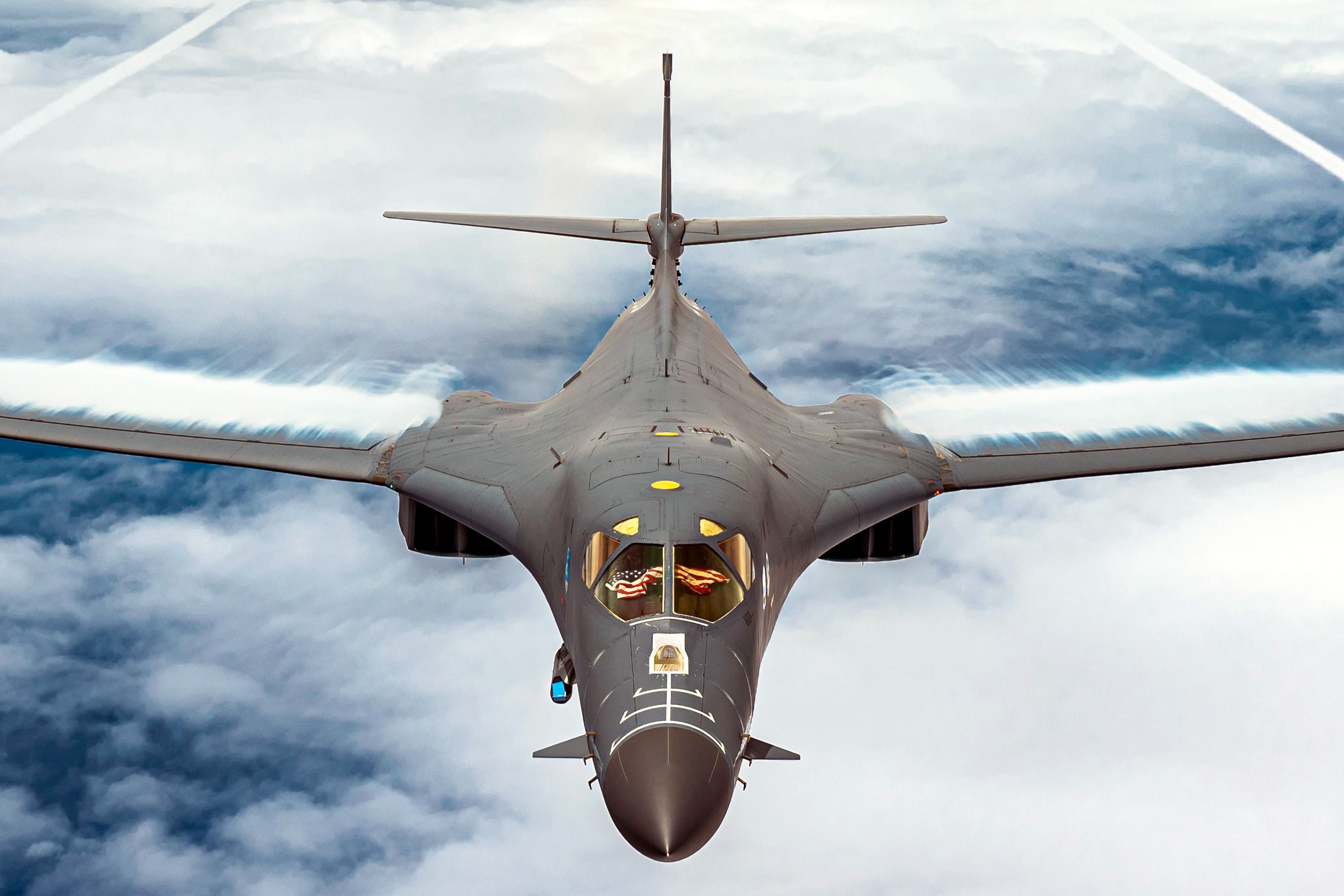
Related
Bad To The ‘Bone’: How Did The B-1B Bomber Get Its Nickname?
The USAF has 45 active B-1B bombers based in South Dakota and Texas.
Well, the C-5 has an acronym and unofficial nickname all rolled into one, and it’s nowhere near as flattering as the previous examples: “FRED,” as in “F*cking Ridiculous Economic/Environmental Disaster.” I first learned of this sobriquet from one of my Military Training Instructors (MTIs) at USAF Basic Military Training (BMT), who had served as a crew chief on C-5s before becoming an MTI. When a plane’s own crew dogs are applying labels like that, you know there’s a problem!
As Blake Stilwell elaborates in a July 2022 article for We Are The Mighty, the “Environmental” part stems from the sheer amount of fuel that the plane consumes, and the “Economic” part pertains to (1) the $100,000 USD **per hour** cost to fly the plane, and (2) the development of the Galaxy cost $1 billion more than the U.S. Government expected, thanks to those infamous “cost overruns” that have become such a cliché in military procurement.
But even those economic/environmental maladies wouldn’t be so bad if “FRED” weren’t plagued by reliability issues. To cite the Tirpak article again:
“The Galaxy also has major problems, as was glaringly apparent during one particular C-5’s trip from Dover to Europe…The C-5 finally reached its destination in Europe—but more than 18 hours late… The C-5 has been a poor performer in the reliability arena since its entry into the fleet in 1970. During the wars in Afghanistan and Iraq, the transport edged close to Air Mobility Command’s standard mission capable rate of 75 percent, but its typical, nonsurge performance puts it in the 65 percent range.”
To address these maladies, the C-5M Super Galaxy comes with what the USAF Fact Sheets describe as a “state-of-the-art maintenance diagnostic system” that “has the ability to record and analyze data from more than 7,000 test points, reducing maintenance and repair time.”
4
“Open-door policy” x2
“Two heads are better than one,” and so are two access passages.
“Flexibility is the key to airpower,” as the longtime Air Force dictum goes (it’s an adage that was originally attributed to the Italian airpower theorist General Giulio Douhet [30 May 1869 – 15 February 1930]).
Likewise, any good unit commander will have an “open-door” policy of accessibility for the benefit of his/her subordinates.
The Super Galaxy embodies the principles of both flexibility and accessibility, as manifested by the fact that both the nose and aft doors open, which allows ground crews to concurrently load and offload cargo from both ends, thus reducing cargo transfer times (and thereby embodying another principle, “Work smarter, not harder”). As the USAF Fact Sheets add, “The full-width drive-on ramps at each end enable double rows of vehicles to be transported.”
5
Reliability Enhancement and Re-engineering Program (RERP)
Current and future improvements on multiple fronts
As per the RERP, the aforementioned “state-of-the-art maintenance diagnostic system” isn’t the only significant improvement seen in the C-5M variant. To wit:
-
General Electric (G.E.) CF6-80C2-L1F (F-138) commercial engines, delivering:
- 22 percent increase in thrust over the previous TF-39 engines
- 30 percent shorter takeoff roll
- 58 percent faster climb rate
- Quieter fleet (Federal Aviation Administration [FAA] Stage 4 Compliant)
- Reduced cost of ownership (in other words, whittling down the “E” variable in the “FRED” factor)
- Increased operational capability well into the 21st century
Not content to rest on its corporate and engineering laurels, Lockheed Martin envisions additional modernization efforts for the Super Galaxy’s future, such as: the incorporation of advanced weather radar, mission computing, communication systems and air traffic management to meet FAA mandates, and survivability in-theater.
What are your thoughts? Let us know what you think in the comment section.

